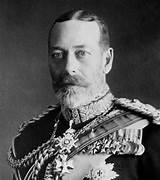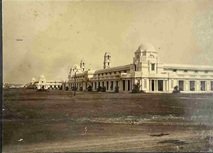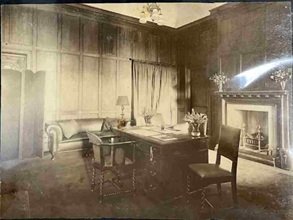British India’s footprints in Delhi’s Old Secretariat: a story of India’s political journey
From the 1911 Durbar to Vithalbhai Patel’s election as Speaker, and upto 1925, the building has witnessed history for over a century. Veteran journalist of Delhi *Vivek Shukla traces the history!
New Delhi: On December 12, 1911, Delhi was gripped by a harsh winter and great excitement. In Burari, North Delhi, the third Delhi Durbar was about to commence. King George V and Queen Mary had arrived from Britain to be crowned as Emperor and Empress of India. Rulers of princely states and other prominent figures had also assembled for the occasion.
Mary had arrived from Britain to be crowned as Emperor and Empress of India. Rulers of princely states and other prominent figures had also assembled for the occasion.
It was at this Durbar that the announcement was made to shift India’s capital from Calcutta to Delhi. Months earlier, on August 25, 1911, British Viceroy Lord Hardinge had written from Shimla to London, suggesting that Delhi would be a better Capital. “It would be a better option to govern by making Delhi the Capital instead of Calcutta,” he stated, adding that Delhi’s climate was more favourable for the British.
 Thus, 54 years after the 1857 uprising had shaken the British regime, Delhi was once again set to become the capital of India.
Thus, 54 years after the 1857 uprising had shaken the British regime, Delhi was once again set to become the capital of India.
Construction of the Old Secretariat: To house the new administration, the British commissioned their architect, Montague Thomas, to design government offices. Thomas selected Chandrawal village for the project—a choice said to have been intended as punishment, since the village had inflicted heavy damage on British forces during the 1857 revolt. Chandrawal was razed, and work on the new building began.
Under the supervision of Thomas and contractor Seth Fatehchand from Sindh, hundreds of labourers constructed a grand edifice within months. Completed in 1912, the building later became known as the Old Secretariat. Ironically, the descendants of the very labourers who built it would go on to become legislators and ministers. Surendra Ratwal, Transport Minister in the 1993 BJP government in Delhi, hailed from such a family.
The first session of the Imperial Legislative Council was held in its chamber in January 1914.
A golden day in parliamentary history: On August 24, 1925, freedom fighter Vithalbhai Jhaverbhai Patel became President of the Central Legislative Assembly—the equivalent of today’s Speaker. He was elected two days earlier, on August 22, 1925.
At the time, the Assembly included towering figures such as Lala Lajpat Rai, Pandit Madan Mohan Malaviya, Motilal Nehru, Bipin Chandra Pal, Tej Bahadur Sapru, Deen Bandhu Chittaranjan Das, Hari Singh Gaur, Jamnalal Bajaj, Sir Purshotamdas Thakurdas, and Mohammad Ali Jinnah. The debates in such a House were of the highest calibre.
As Speaker, Patel brought order and dignity to proceedings. He encouraged debate on bills and resolutions, intervening only after thorough preparation. His legal acumen, nationalist zeal, and oratory transformed the Assembly into a platform for amplifying the independence movement. His leadership helped lay the foundations of India’s enduring parliamentary traditions. (Viceroy’s Office)
Gandhi’s visits to the Assembly: Mahatma Gandhi visited the Delhi Legislative Assembly premises three times. His first visit was on April 27, 1918, at the invitation of Viceroy Chelmsford, to attend a war conference seeking India’s support in World War I. During the conflict, 74,000 Indian soldiers lost their lives. Gandhi believed Indian participation in Britain’s war would pave the way for self-rule, as Britain would feel indebted to India.
He visited again on February 6, 1919, during a heated debate on the Rowlatt Bill, which empowered the British to arrest and detain Indians without trial. Gandhi observed the proceedings from the visitors’ gallery.
His final visit was on April 8, 1931, to address the fourth annual conference of FICCI. “Gandhi came here three times, the last being in 1931,” notes Vijender Gupta, current Speaker of the Delhi Assembly.
Meanwhile, on January 18, 1927, the Central Legislative Assembly shifted from the Old Secretariat to Council House, later known as Parliament House after independence. The Secretariat building continued to be used for various functions for more than two decades.
Delhi’s changing political set-up: After independence, Delhi’s political and administrative structure underwent significant changes. Before 1947, multiple municipalities operated under the supervision of the Chief Commissioner. The Delhi State Legislative Assembly was established on March 17, 1952, with 48 members and a Council of Ministers to aid the Chief Commissioner. The first Chief Minister was Chaudhary Brahm Prakash, succeeded by Sardar Gurmukh Nihal Singh in 1955.
Following the recommendations of the State Reorganisation Commission, Delhi ceased to be a Part-C State on November 1, 1956.
The Metropolitan Council era : Public demand for greater democracy led to the enactment of the Delhi Administration Act, 1966. It created the Metropolitan Council, a recommendatory body with 56 elected members and five nominated by the President. The Lt Governor, appointed by the President, headed the administration.
“The Metropolitan Council was a democratic body,” recalls Farhad Suri, former Mayor of Delhi. “It consisted of members such as Vijay Kumar Malhotra and Mir Mustaq Ahmed, but even this body was abolished in the 1980s.”
Return of the Assembly in 1993: Responding to long-standing political demands, the Delhi Assembly for the National Capital Territory was created. Its first sitting was held on December 14, 1993, with 70 members elected from constituencies across the capital.
Since then, the Old Secretariat building has continued to witness momentous events. Yet, its crowning glory remains August 24, 1925—the day Vithalbhai Patel became the first Indian to preside over the Central Legislative Assembly. To commemorate that historic moment, a special Speaker’s event will be held at the Old Secretariat on the coming Sunday.
*Veteran Journalist and Author, Vivek Shukla. has a knack for uneart hing hidden history of Delhi and metamorphosis of the city from ancient Mahabharata era into New Delhi, the seat of power of world’s largest democracy.
hing hidden history of Delhi and metamorphosis of the city from ancient Mahabharata era into New Delhi, the seat of power of world’s largest democracy.
